Anatomy Trains in training
Movement education has leverage in three primary social areas:
• physical education for the young, early and in school;
• the wide spectrum of rehabilitation (anything that turns a negative into a neutral);
• performance enhancement, which in turn parses into:
Meanwhile, within our own house there is often ‘bad blood’ and ignorance between and even within sincere professions. Too many practitioners rely blindly on oral lore at one end, or value ‘evidence based’ over clinical experience at the other. Differing professions use the same word for different events, or different terms for the same event – ask different professional groups to define the word ‘stretch’.1 A ‘unified field’ in the movement therapies would do much to advance all the modalities within it.
Although Anatomy Trains was developed out of the author’s experience of mapping global patterns of postural compensation (see Ch. 11 and the appendices which follow, aimed more at structurally-oriented manual therapy), many movement-based therapies and training methods such as physiotherapy, rehabilitative exercise, Pilates, yoga, and performance-based personal and team training have found real value in using the Anatomy Trains map. Additionally, recent research has uncovered surprising fascial properties directly relevant to movement training.
Accordingly, here we first add to the concepts offered in Ch. 1 with a brief summary of findings relevant to what Dr Robert Schleip2 has termed ‘Fascial Fitness’3–6, before exploring some simple applications of Anatomy Trains to common foundational movement patterns. This chapter also includes a section on walking from our colleague James Earls.7 Additional material from earlier editions and supplementary videos are available via the accompanying website and www.anatomytrains.com.
Fascial Fitness®*
With all the recent attention paid to fascia in training circles, it is important to emphasize that training fascia is not new.8 Our connective tissue web has always been with us; we cannot avoid training it, stretching it, and allowing (or hindering) its job of repairing itself and providing a substrate for the muscle tissue to work on the skeletal and articular framework. Of course trainers and physiotherapists have been considering it all along – as individual tendons, ligaments, and attachments considered as separate parts. The fascia as a whole body system – the thesis of this book – has been less considered by the rehabilitation and performance field.
All methods – dance, martial arts, yoga, Alexander Technique, strength conditioning, or any of their modern offshoots – train our fascia one way or another. (In fact, the ubiquitous sitting we do in the Western world is also a form of ‘fascial training’ or ‘stretching’ that can occupy many hours of an office-worker’s week, with some deleterious effects – see the section on sitting later in this chapter.) The emerging picture from the research suggests that we can do a better job if we are conscious of the fascial properties and responses in addition to nutritional support, neurological coordination, and muscle strength and balance.
Here our focus is once again on the function of healthy fascia. Fascial dysfunction, pathology, and the intricacies of body pain are beyond the scope of this volume. The following is only a partial and truncated set of bullet points; a more complete picture of the relevant research can be gathered elsewhere.2, 3–6, 8
Perhaps the most significant clinical finding for trainers is that regular loading (read: exercise) within the healthy limits of the tissue induces a regular spiral lattice pattern through the myofascia, while a lack of regular loading produces a felt-like irregular architecture (Fig. 10.1).9–12 Lack of fascial loading also reduces the molecular ‘crimp’ in the fascia, which not only provides a healthy first ‘bounce’ of elasticity to the tissue, but also is the method by which the Golgi Tendon Organs (GTOs) read the load on the tissue.12,13 Reduce the crimp through inactivity and the perception of load will be less accurate (Fig. 10.2). Thus the sedentary person leaving the couch or the hospital bed to return to exercise faces two fascial challenges in addition to his muscle weakness: remodeling the spiral lattice and building the crimp back in.

Fig. 10.1 Healthy loading induces a regular spiral lattice in the myofascia. A sedentary life leaves the fascia without directing forces, and it orients randomly, like felt. Redrawn from Schleip and Müller6; reproduced courtesy of Robert Schleip and fascialnet.com.

Fig. 10.2 Healthy crimp provides a first response of elasticity, and also is the means whereby the Golgi Tendon Organs can assess load. Reproduced with kind permission of Dr Robert Schleip and fascialnet.com.
Both of these require longer time scales than building muscle, as collagen turnover in the less-vascular fascia is far slower than protein turnover in the well-served muscle, so that early in any new training program is a more likely time for injury, when the muscles are outdistancing their supporting fascia.14
Training isolated to individual muscle groups may train that muscle well, but can leave out fascial tissues necessary to the body’s health in functional movement.15 For instance, training the quadriceps in a seated position by weighting the ankle and extending the knee will not build the necessary strength in the contralateral SI joint ligaments and piriformis (for force closure), leading to the likelihood of pelvic dysfunction and pain.16 Training the myofascial meridians as open or closed kinetic chains builds the fascial strength between and around the muscles, and allows for the greater coordination of proximal initiation and distal delay (Fig. 10.3).15
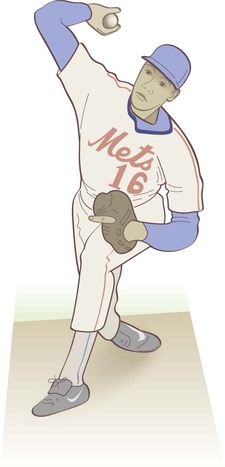
Fig. 10.3 Training long myofascial chains makes maximum use of long lever arms, coordination, fascial elasticity, and the whip-like motion of proximal initiation with distal delay.
We have assumed that ligaments are passive structures until we reach the end-range of motion, at which point they come into play to save the joints.17 Van der Waal’s careful dissections show that ligaments are not the parallel system we thought them to be: most ligaments are in dynamic series with the surrounding muscles.18 Our common dissection method only made them appear separate (Fig. 10.4).

Fig. 10.4 Most ligaments run in series with nearby muscles and are not the parallel system depicted in most texts. (After van der Waal 1988)
We often talk about ‘feeling the stretch in our muscles’, but we have perhaps six times the number of receptors in the fascia around any given muscle than we do in the muscle itself.19 Even the muscle spindles inside the muscles are reading the change in length of the connective tissue to infer the change of length in the muscle. Muscle itself (the neurally rich muscles like the suboccipitals, eye muscles, and plantaris are exceptions) is comparatively fairly numb. Outside the muscle tissue are the well-distributed and clever endings of receptors in the fascial net: the GTOs that measure load, the Paciniform corpuscles for measuring pressure, and the Ruffini endings for measuring shear, along with a host of free nerve terminals that measure a bit of everything and also connect to the nociceptic (pain) tracts (Fig. 10.5).20
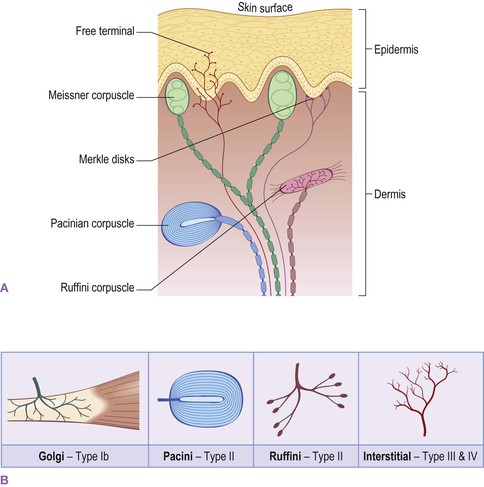
Fig. 10.5 The nervous system has a large number of generalized receptors in the interstitial fascia, and has also developed specialized endings for stretch, load, pressure, and shear.
The brain is clearly vitally interested in what’s going on interstitially in the fascia. Along with the vestibular system and the many skin sensors, we absolutely need all the fascial sensors to know what is going on with our body in space.21 The suggestion here is that bulldozing through our sense data (‘no pain, no gain’) is a great way toward short-term or long-term fascial injury, and that cultivation of a refined sense of proprioception, interoception, and kinaesthesia will serve us well in extending our skills into older age.
The subject of stretch is a fraught one we have attempted to deal with elsewhere and will not repeat here.22 Fascia has a combination of viscoelastic and elastic properties, and the elastic properties can be increased in response to specific training (Fig. 10.6).23,24 Since elastic bounce is an observable characteristic of healthy young people and the storage and recoil of fascial elasticity is implicated in efficient running and fast exercise,25 the suggestion is that cultivating fascial elasticity may contribute to maintaining such capacity into our older years.
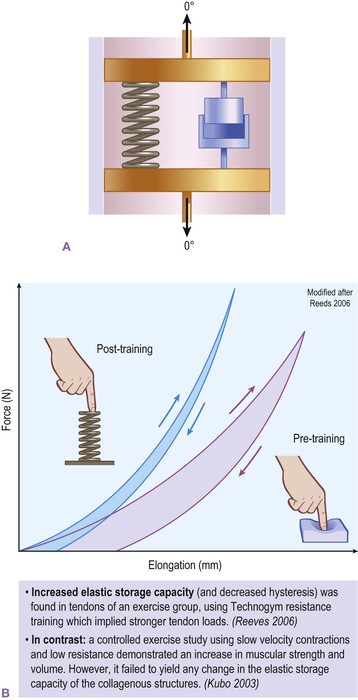
Fig. 10.6 (A) Fascia combines both elastic (spring) and visco-elastic (damper, plastic, or shock absorber) properties. (B) These properties can be trained. Illustration modified after Reeves et al., 2006.23 Redrawn from Schleip and Müller6 with kind permission of Dr Robert Schleip and fascialnet.com.
A common use of fascial elasticity is seen in the ubiquitous stretch–shortening cycle, where fascia (and muscle) is ‘pre-stressed’ by a preparatory counter movement.26 Going down to jump, bringing a racquet back before a stroke, or swinging a kettlebell back before lifting it forward would all be examples of this common strategy. Use of this preparatory counter movement makes the subsequent effort smoother and less prone to injury.
We all know the immune system (which is largely connective tissue in origin) has genetic differences in blood types and immune reactions, so it is unsurprising that our fascial net shows genetic variation. The tightness of the fascial net varies along a spectrum from ‘Viking’ (probably developed in more Arctic climates: dense and quickly repaired, creating a lot of friction and thus heat in movement) vs ‘Temple dancer’ (probably developed in more tropical climates, highly elastic and bendy, low friction sliding). 27, 28
Most common body injuries involve fascia.29 Gentle perseverance works on three time scales. Firstly, muscles develop faster than fascia, due to slow collagen turnover, so a program to build fascial resilience should be undertaken with a long-term view, such as that promoted by yoga and the martial arts. Since the half-life of collagen is about one year, a period of 6–24 months (depending on age, exercise, and nutrition) is required to make a thorough change in the fascial system.30 The ‘gotta get back in shape fast for summer’ attitude of pushing the muscles to ‘pop’ in a few-weeks is a recipe for myotendinous junction or antithesis injury (based on nearly 40 years of anecdotal experience).
Secondly, research confirms the fascial portion of the idea of staggering heavy workouts. After a heavy stimulus (stretching or muscle work) fibroblasts are stimulated to produce more fascia (in Vikings especially) and the fascia-busting enzymes like collagenase and metallurase begin breaking down other fascia.31 By 24 hours after the workout, there is a net loss of collagen, implying that the system might be a bit weaker, and thus not ready for another heavy stimulus, but by 48 hours there is a net gain, and by 72 hours the system has settled again (Fig. 10.7).
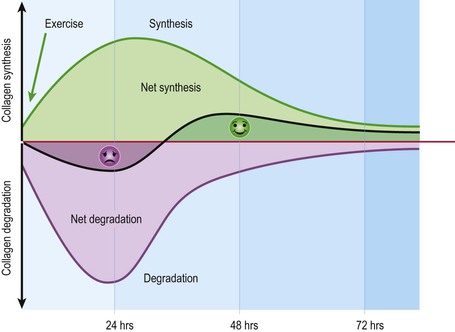
Fig. 10.7 Heavy workouts perturb the fibroblasts, which in turn both dissolve old collagen and create new fibers. This process results in a net degeneration after 24 hours, but a net synthesis after 72 hours. Illustration modified after Magnusson et al., 2010.31 Redrawn from Schleip and Müller6 with kind permission of Dr Robert Schleip and fascialnet.com.
Thirdly, most injuries occur when local fascia tissue is loaded and required to move too quickly. A rough parallel lies in the common plastic carrier bag: stretch it slowly and it will plastically deform for quite a distance; stretch it quickly and it will tear. In our experience, a movement or exercise that can be performed slowly can then be done quickly in a safer manner than starting out trying to learn it quickly – a strategy that can lead to local tissue failure and the necessity for long-term recovery.
• The longitudinal connections explored in this book, as well as in the ‘fascial slings’ work of Vleeming and Lee, 16,32,33 or the lines of Meziére.34
• The latitudinal connections of areolar tissue (‘fuzz’) and intermuscular septa from one muscle to its neighbors,35 as well as to the ligaments of the joint the muscle crosses,36 and to the outer unitard layer of the fascia profundis.
• The connections to the fascial sheaths containing the neurovascular bundles, which, if shortened, adhered, traumatized, or twisted, may restrict the movement of the area.37
Applications of Anatomy Trains in movement
Although applications for both movement and manual therapy have been interspersed throughout the preceding chapters, the specific sequencing of soft-tissue releases or movement education strategies is left to in-person training.38 This book is primarily designed to aid the reader in observing these body-wide myofascial patterns, so that currently held skills and treatment protocols can be applied globally in novel ways.
Still photographs are a frustrating way to go about assessing movement, but are necessitated by the form of a book. Assessing clients in standing is explored more deeply in the next chapter, and in-person classes. (DVD courses in motion assessment are available: www.anatomytrains.com, www.astonenterprises.com) (DVD ref: BodyReading, 101). ![]()
You can use your knowledge of the lines to see how compensations or inefficient postures are inhibiting integrated movement or effective strength in the moving body. In general, one wants to see:
• Each line and ‘track’ within the line to be able to either lengthen or contract from its resting length, i.e. the line should be neither concentrically nor eccentrically loaded when at rest.
• Even tone along the length of the lines. Structural isolation is the opposite of integration, so areas of hypertone or hypotone should be evened out through stretching, bodywork, or strength work.
• Each line should be able to stabilize segmental arrangement in a neutral position while the action is being performed, e.g. in a lateral kick in football (soccer), the abdominals in the Lateral Line should have sufficient tone on both sides to keep the rib cage in place so that the force of the kick is not robbed by rotation or side-shift of the ribs.
Classical sculpture
Kouros (Fig. 10.8)
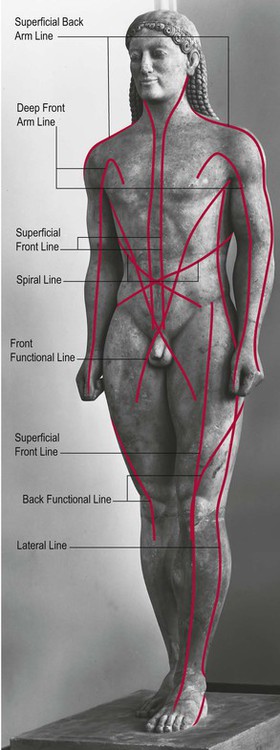
Fig. 10.8 Kouros. The pre-classical Kouroi series of sculptures shows close to ideal ‘coordinated fascial tensegrity’ – balance and proper placement for the Anatomy Trains lines. (Reproduced with kind permission from Hirmer Fotoarkiv.)
Bronze Zeus (Fig. 10.9)

Fig. 10.9 Zeus. Most martial or sportive actions involve connecting the arm to the opposite leg to increase leverage. (Reproduced with kind permission from Hirmer Fotoarkiv.)
Because the bolt is clearly to be thrown along the horizontal plane, the two Lateral Lines are quite balanced with each other. By this we can infer that it is being thrown for accuracy over a short distance (compare to the ‘Hail Mary’ throw in Fig. 8.3 where the Arm Lines are also strongly assisted by the Spiral and Functional Lines). Were it to be thrown earthward from heaven, the left Lateral Line would necessarily shorten and the other lines adjust to angle the throw downward.
Heracles (Fig. 10.10)
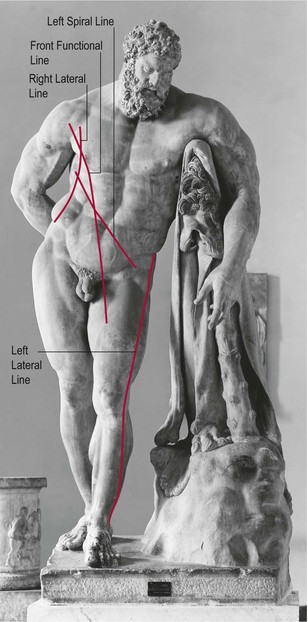
Fig. 10.10 Herakles (Heracles, Hercules). The classical Herakles shows a shortening of the core and asymmetrical imbalance among the lines. (Reproduced with kind permission from Hirmer Fotoarkiv.)
Blessed with fabled strength though he may be, notice that Heracles’ body shows the characteristic hip-hiked, off-center pose that can be found in most classical art. This involves a commonly seen pattern: shortness in the lower left Lateral Line (LL), and the upper right Lateral Line. This is accompanied by a retraction or collapse in the core or Deep Front Line, demonstrated in several ways. There is a twist in the core supporting the lower thoracic spine, i.e. in the psoas complex with both sides shortening to accommodate it. The chest, though massive, seems slightly collapsed toward an exhalation pattern. The lack of inner length can also be seen in the ‘girdle of Adonis’ spilling over the edge of the pelvis (that is not fat, but rather a result of core shortening). It extends to the legs, where the shortness of the DFL in the adductor group and deep posterior compartment of the lower leg pulls up on the inner arch and helps to shift the weight onto the outside of the foot. The collapse can be read in the tissues of the knee, where the tissues on the inner knee (DFL) are lower than the tissues on the outer knee (LL). Contrast this with the core support found in any of these examples, even the asymmetrical and unathletic Venus.
Aphrodite de Melos (Fig. 10.11)
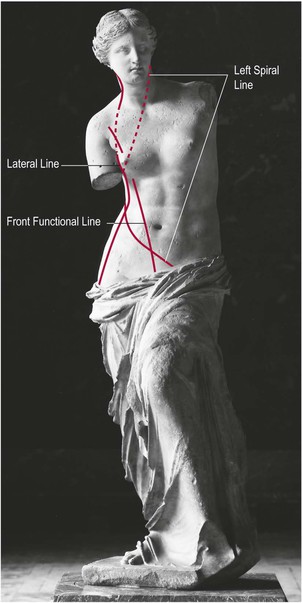
Fig. 10.11 Aphrodite de Melos (Venus de Milo). Any seductive pose will involve asymmetrical shortening of the helical lines (Reproduced with kind permission from Hirmer Fotoarkiv.)
Discobolus (Fig. 10.12)
The discus thrower of Praxiteles is the consummate representation of the lines in service of an athletic skill. The trim young fellow holds the discus with the Superficial Front Arm Line (SFAL) of his right arm from the flexed fingers to the pectoralis major, stabilizing his hold with the pressure from his thumb, which connects up the Deep Front Arm Line through the biceps to the pectoralis minor. This tension is balanced by a similar engagement in the two front Arm Lines on the left side, and the two are connected across the pectoral muscles in the chest down the arm to his left hand, which is clearly fully involved in the throw.
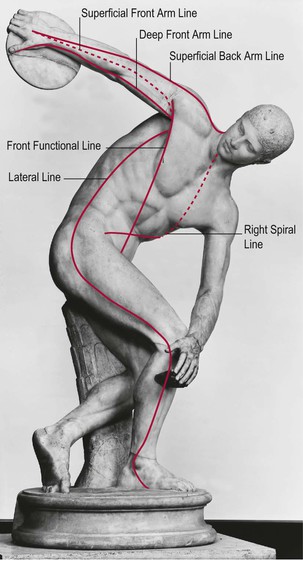
Fig. 10.12 Discobolus. The great athletes involve all the lines, distributing the strain evenly across the body. (Reproduced with kind permission from Hirmer Fotoarkiv.)
Athletics
Tennis player (Fig. 10.13)
We can imagine our tennis server is short, so she leaps to get the highest advantage on the ball. Spiking into a serve or a short return when up in the air involves shortening the front lines from end to end against each other to get the force in the right direction. The obvious lines for the power of the stroke are provided by both the Superficial and Deep Front Arm Lines that grip and power the racket, arrayed along the visible surface of the right arm in this picture. Notice how the left Front Arm Lines have contracted in against the body to provide stability for more height and stretch to the right side.
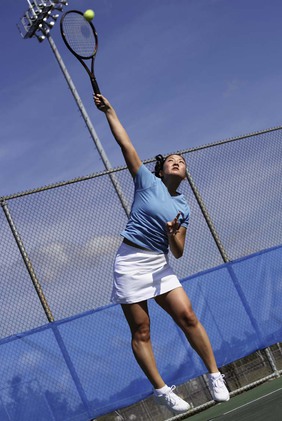
Fig. 10.13 Tennis player. (© iStockphoto.com, reproduced with permission. Photograph by Michael Krinke.)
Basketball (Fig. 10.14)
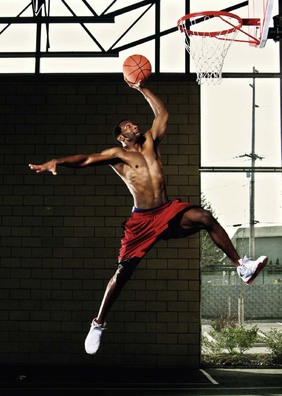
Fig. 10.14 Basketball player. (© iStockphoto.com, reproduced with permission. Photograph by Jelani Memory.)
Golfer (Fig. 10.15)
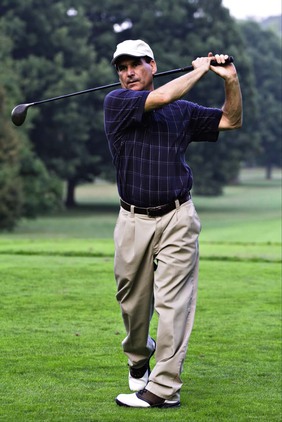
Fig. 10.15 Golfer at the end of a drive. (© iStockphoto.com, reproduced with permission. Photograph by Denise Kappa.)
The weight on the legs has shifted to the inner part of the right foot (and right on past, at the moment of this picture) and onto the outside of the left foot. This involves a contraction of the Deep Front Line on the left leg (in addition to the contraction in the SPL already noted) and a stretch in the Lateral Line on the outside of the left leg. This balance between the Deep Front Line on the inner line of the leg and the Lateral Line on the outer aspect of the leg is crucial to remain centered on the legs while the Spiral Lines roll the weight through to the inside of the following foot and the outside of the leading foot. If these lines do not maintain a coordinated tension through the myofascia, the upper lines cannot easily coordinate the precision swing.
Musicians
Through cross-fertilization from the world of dance concerning body use, and the proliferation of the Alexander Technique and other forms of re-patterning the use of the self, musicians and their teachers as a class have become more aware of postural and movement issues. Paying attention to self-use can certainly affect both the quality of playing and the longevity of the professional player.
Cellist (Fig. 10.17)
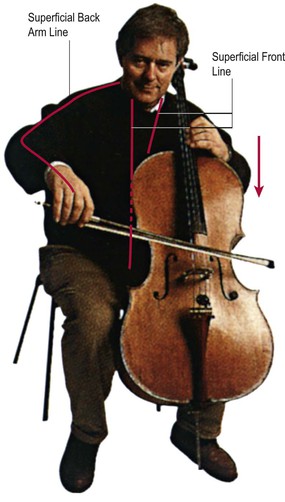
Fig. 10.17 A cellist. © Phil Starling http://www.philstarling.co.uk. Reproduced with kind permission.
Violist (Fig. 10.18)
The tendencies of the cellist are magnified in the violist or violinist, owing to the necessity to clamp the instrument between the left shoulder and the left side of the jaw. Although the photograph shows trained good use, the shortening of the left Lateral Line is still clear, and it extends into, and is often sharply present in, the neck. This chronic shortness can sometimes lead to impingement problems through soft-tissue tightening around the brachial plexus or actual stenosis at the cervicals, either of which can adversely affect the ability of the left hand to finger properly. This problem can be ameliorated, if not solved, by adding an extension to the chin rest to make the two sides of the neck more equal in length.

Fig. 10.18 A violist. © Phil Starling http://www.philstarling.co.uk. Reproduced with kind permission.




